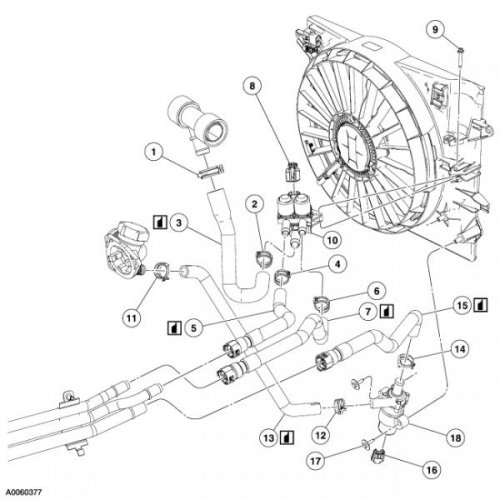You have a leak. There's no other way that air is getting back in there to block coolant flow. It really is that simple.
Ty. No aftermarket coolant. Ford OEM only for me. No leaks. Ty for info. And yes it is gen1 v8. 02. Thermostat housing and bottle new. So other parts I need to get will be upper and lower radiator hoses right? And I'll check radiator. Had heard that but not exactly where to check for leaks or cracks. Ty again.
What LS do you have? Which generation? Which engine?
I had assumed it was a gen I V8, but you are asking about which parts when you have already been in a pretty good thread on the gen I V8 parts.
Cooling System 3.9L - 1st GEN Lincoln LS w/ PN's
I would add to that thread to check your radiator. The side tanks are plastic, and eventually the front of the passenger side tank cracks near the top.
The "aux thing" is the aux coolant pump. It's by the DCCV. The DCCV is bad if it leaks, if it is stuck open or closed, if it is clogged, or if it has an electrical open or short. The DATC self diagnostics can catch the short or open, but not the other problems.
If you have good heat at idle (right after bleeding, before the air gets sucked in again), then the aux pump is okay (unless it is leaking).
You probably won't see liquid coolant at the leaks, but you could see the stains from dried coolant.
Also note that aftermarket degas bottles tend to be really bad. If you went aftermarket, that could also be the problem.



